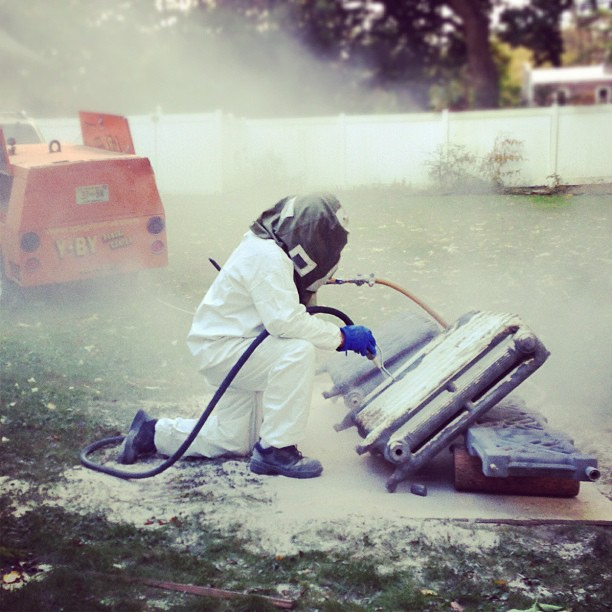How to Sand-Blast Cast Iron Radiators

As water circulates through the radiator pipes all the time it is bound to get corroded one day or another. Sand cast iron radiators suffer greater rates of corrosion than other metal radiators. If corrosion is not kept in check, it may damage the body of radiator completely, in extreme cases even cause leakage.
Moving sand cast iron radiators is not difficult except for the fact that they are extremely heavy and bulky. For sand blasting the radiator, you will have to remove it from the heating mechanism and place it an open environment such as your garage.
As water circulates through the radiator pipes all the time it is bound to get corroded one day or another. Sand cast iron radiators suffer greater rates of corrosion than other metal radiators. If corrosion is not kept in check, it may damage the body of radiator completely, in extreme cases even cause leakage.
Moving sand cast iron radiators is not difficult except for the fact that they are extremely heavy and bulky. For sand blasting the radiator, you will have to remove it from the heating mechanism and place it an open environment such as your garage.
Instructions
-
1
Turn the radiator control valve in the clock wise direction till the knob can turn no more. Take off the cap which covers the lock valve and turn it in clock wise direction with the help of a pipe wrench. Count the number of rotations of the wrench, as you will have to rotate it the same number of times when putting the radiator back in its place.
-
2
Remove all sensitive flooring from around the radiator and place a small bucket underneath the radiator. Loose the drain valve to let go of any water remaining in the radiator. When the bucket fills up completely, tighten the nut, waste the contents of the bucket in sink, and put the bucket back underneath the radiator. Repeat this process till water stops flowing out of the drain hole.
-
3
Move the radiator either outside or in your garage. Identify whether rust is present on the surface of the metal or it runs deep. If it is deep, you will have to replace the radiator as sand blasting a deeply corroded radiator will further aggravate the situation.
-
4
Purchase ample amount of silica from a hardware store and put it in the sand blasting gun. Turn on the sand blaster and give it about 5-10 minutes to build up the pressure. When the needle touches the 100 psi mark, it is go time. Bring the sand blaster to about 6-8 inches from the radiator and adjust the tip of the gun so that the spray is about 2 inches wide.
-
5
Sand blast each nook and corner of the radiator, this is not easy and will take considerable amount of your time. Sand blasting will not only remove the rust from the surface of the radiator, it will remove dirt, debris, and worn out paint as well.






